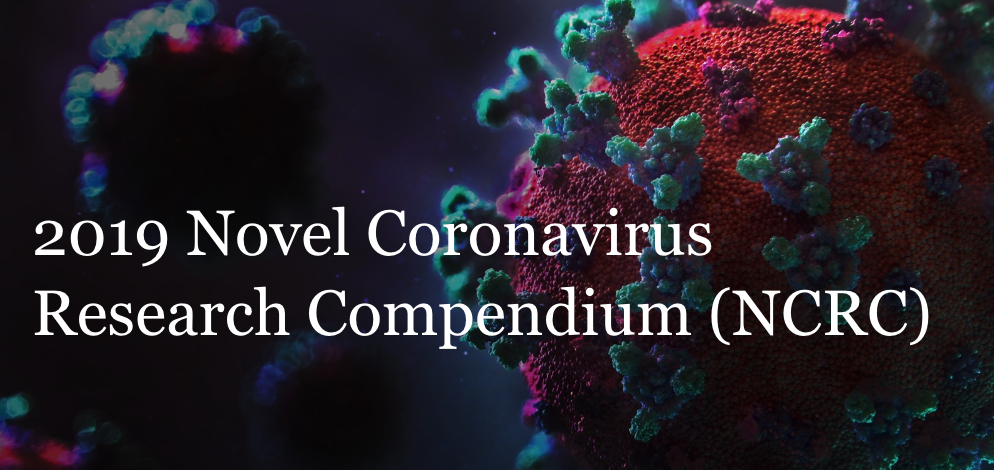SARS-CoV-2 vaccine breakthrough infections with the alpha variant are asymptomatic or mildly symptomatic among health care workers
This article has been Reviewed by the following groups
Discuss this preprint
Start a discussion What are Sciety discussions?Listed in
- Evaluated articles (ScreenIT)
- Evaluated articles (NCRC)
Abstract
Vaccine breakthrough SARS-CoV-2 infection has been monitored in 3720 healthcare workers receiving 2 doses of BNT162b2. SARS-CoV-2 infection is detected in 33 subjects, with a 100-day cumulative incidence of 0.93%. Vaccine protection against acquisition of SARS-CoV-2 infection is 83% (95%CI: 58–93%) in the overall population and 93% (95%CI: 69-99%) in SARS-CoV-2-experienced subjects, when compared with a non-vaccinated control group from the same Institution, in which SARS-CoV-2 infection occurs in 20/346 subjects (100-day cumulative incidence: 5.78%). The infection is symptomatic in 16 (48%) vaccinated subjects vs 17 (85%) controls (p = 0.01). All analyzed patients, in whom the amount of viral RNA was sufficient for genome sequencing, results infected by the alpha variant. Antibody and T-cell responses are not reduced in subjects with breakthrough infection. Evidence of virus transmission, determined by contact tracing, is observed in two (6.1%) cases. This real-world data support the protective effect of BNT162b2 vaccine. A triple antigenic exposure, such as two-dose vaccine schedule in experienced subjects, may confer a higher protection.
Article activity feed
-
-

Our take
This study, available as a preprint and thus not yet peer-reviewed, sought to estimate the risk of infection among Italian healthcare workers before and after vaccination. Among 3,810 total workers, 2.7% tested positive among those with prior infection from the first pandemic wave, compared to 6.5% among those without prior infection. After vaccination, 0.4% of previously infected participants and 1% of previously uninfected participants tested positive for infection. Overall, the estimated protective effect was 87% across all groups. Household transmission amongst breakthrough infections was low (2/33). Notably, there was no unvaccinated control group to directly compare the risk of infection following vaccination and no pre-vaccination estimates of household transmission amongst cases, however this paper provides …
Our take
This study, available as a preprint and thus not yet peer-reviewed, sought to estimate the risk of infection among Italian healthcare workers before and after vaccination. Among 3,810 total workers, 2.7% tested positive among those with prior infection from the first pandemic wave, compared to 6.5% among those without prior infection. After vaccination, 0.4% of previously infected participants and 1% of previously uninfected participants tested positive for infection. Overall, the estimated protective effect was 87% across all groups. Household transmission amongst breakthrough infections was low (2/33). Notably, there was no unvaccinated control group to directly compare the risk of infection following vaccination and no pre-vaccination estimates of household transmission amongst cases, however this paper provides evidence of the real-world protection offered by vaccines. These data precede the emergence of the Delta variant; results related to breakthrough infections and onward transmission may be different in areas in which the Delta variant is predominant.
Study design
prospective-cohort
Study population and setting
The study objective was to assess the risk of infection among vaccinated healthcare workers. Healthcare workers from Fondazione IRCCS Policlinico San Matteo, Pavia, Italy, were tested for active infection and antibodies to indicate prior SARS-CoV-2 infection from April 29 to June 30, 2020. During the second wave of the pandemic from September 1 to November 30, 2020, they were tested again for SARS-CoV-2 infection and the 3-month cumulative incidence was estimated. Current infection was determined via the presence of SARS-CoV-2 RNA determined by reverse-transcriptase polymerase chain reaction (RT-PCR). Healthcare workers began to be vaccinated in December with the BNT162b2 (Pfizer/BioNTech) vaccine, with second doses for full immunity being given from January 18 to March 31, 2021. The study compared the incidence of SARS-CoV-2 infection in the second wave among previously uninfected individuals compared to previously infected individuals. They also estimated the 3-month cumulative incidence of SARS-CoV-2 infection following vaccination, as well as stratified by prior infection before vaccination. Symptom data was available for a subset of participants and was also described. They also completed genotyping on the samples collected to determine the potential variant. Contact tracing among family and coworkers was conducted for vaccinated subjects who tested positive.
Summary of main findings
In the initial testing from April 29 to June 30, 2020, 3810 healthcare workers were tested. 336 (8.8%) participants were found to have prior infection, compared to 3474 without prior infection of SARS-CoV-2. Participants were tested for antibodies via chemiluminescent assay for anti-S1 and anti-S2 IgG. Among these two strata, in the second wave from September 1 to November 30, 9 individuals with prior infection tested positive (2.7%) compared to 225 in those without prior infection (6.5%). This reflected a statistically significant difference in the 3-month cumulative incidence among previously infected vs. previously uninfected groups. Of these, 1 of the 4 (25%) subjects had mild symptoms among those with prior infection, compared to 85 of 108 (79%) of those without prior infection. Of those initially enrolled, 3268 participants’ serostatus could be determined from both the first and second pandemic wave. Infection was determined in 33 vaccinated subjects: 2 among the 507 previously infected with follow-up (0.4%), compared to 24 among the 2,761 previously uninfected individuals (0.9%), and 7 among 452 individuals with unknown or indeterminate serostatus (1.5%). The odds of developing SARS-CoV-2 infection after vaccination compared to subjects before vaccination was 0.13 (95% CI: 0.08 to 0.19), with an estimated protective effect of 87%. They determined that all analyzed patients were infected by the B.1.1.7 (alpha) variant. Of the 33 infections post-vaccination, only 2 were transmitted to family members (6.1%); comparable data were not available pre-vaccination.
Study strengths
The study had prior infection data available throughout multiple waves of the pandemic, as well as vaccination status information available. Healthcare workers, particularly in Italy, which was hard hit in the pandemic, are at increased risk for SARS-CoV-2 infection. Therefore, this gives insight into the vaccine protection conferred to individuals who are most likely to be exposed. They also genotyped the samples, which is important to consider given the proliferation of new variants. They also conducted contact tracing, allowing them to measure potential transmission due to infected individuals even post-vaccination.
Limitations
There was no prospective unvaccinated control group available to compare the risk of infection to properly estimate vaccine effectiveness in this sample, but rather the comparison was to the same prior to vaccination. This offers a potential estimate of protective effect but not of specific vaccine efficacy or variant-specific vaccine efficacy. Similarly, there were few individuals testing positive post-vaccination and no transmission estimates from pre-vaccination, therefore while they show few transmitted infections from vaccinated people, it is not possible to extrapolate if that is due to their vaccination in this study.
Value added
This study examines breakthrough cases among a cohort of healthcare workers at high risk of infection, including potential transmission to others.
-

SciScore for 10.1101/2021.06.29.21259500: (What is this?)
Please note, not all rigor criteria are appropriate for all manuscripts.
Table 1: Rigor
Ethics Consent: Study procedures were approved by Fondazione IRCCS Policlinico San Matteo and all the subjects gave their written informed consent. Sex as a biological variable not detected. Randomization not detected. Blinding not detected. Power Analysis not detected. Cell Line Authentication not detected. Table 2: Resources
Antibodies Sentences Resources SARS-CoV-2-specific antibody and T-cell determination: To detect subjects with SARS-CoV-2 infection after the first pandemic wave, serological analysis was performed in the period April 29-June 30 2020 using chemiluminescent assay (Liason SARS-CoV-2 S1/S2 IgG, Diasorin, Saluggia, Italy) for the quantitative measurement of SARS-CoV-2 anti-S1 and anti-S2 IgG … SciScore for 10.1101/2021.06.29.21259500: (What is this?)
Please note, not all rigor criteria are appropriate for all manuscripts.
Table 1: Rigor
Ethics Consent: Study procedures were approved by Fondazione IRCCS Policlinico San Matteo and all the subjects gave their written informed consent. Sex as a biological variable not detected. Randomization not detected. Blinding not detected. Power Analysis not detected. Cell Line Authentication not detected. Table 2: Resources
Antibodies Sentences Resources SARS-CoV-2-specific antibody and T-cell determination: To detect subjects with SARS-CoV-2 infection after the first pandemic wave, serological analysis was performed in the period April 29-June 30 2020 using chemiluminescent assay (Liason SARS-CoV-2 S1/S2 IgG, Diasorin, Saluggia, Italy) for the quantitative measurement of SARS-CoV-2 anti-S1 and anti-S2 IgG antibody. SARS-CoV-2suggested: Noneanti-S1suggested: Noneanti-S2 IgGsuggested: NoneAnti-Spike IgG antibody was determined using Liason SARS-CoV-2 S1/S2 IgG (Diasorin). Anti-Spike IgGsuggested: NoneExperimental Models: Cell Lines Sentences Resources Virus isolation and sequencing: Virus isolation was performed by inoculation of 200µl nasopharyngeal swab suspension medium, after decontamination with an antibiotics pool for 30 min at room temperature, on Vero E6 cells cultured in 24well plate, and detection of cytopathic effect after one week culture. Vero E6suggested: NoneResults from OddPub: We did not detect open data. We also did not detect open code. Researchers are encouraged to share open data when possible (see Nature blog).
Results from LimitationRecognizer: An explicit section about the limitations of the techniques employed in this study was not found. We encourage authors to address study limitations.Results from TrialIdentifier: No clinical trial numbers were referenced.
Results from Barzooka: We did not find any issues relating to the usage of bar graphs.
Results from JetFighter: We did not find any issues relating to colormaps.
Results from rtransparent:- Thank you for including a conflict of interest statement. Authors are encouraged to include this statement when submitting to a journal.
- Thank you for including a funding statement. Authors are encouraged to include this statement when submitting to a journal.
- No protocol registration statement was detected.
Results from scite Reference Check: We found no unreliable references.
-


